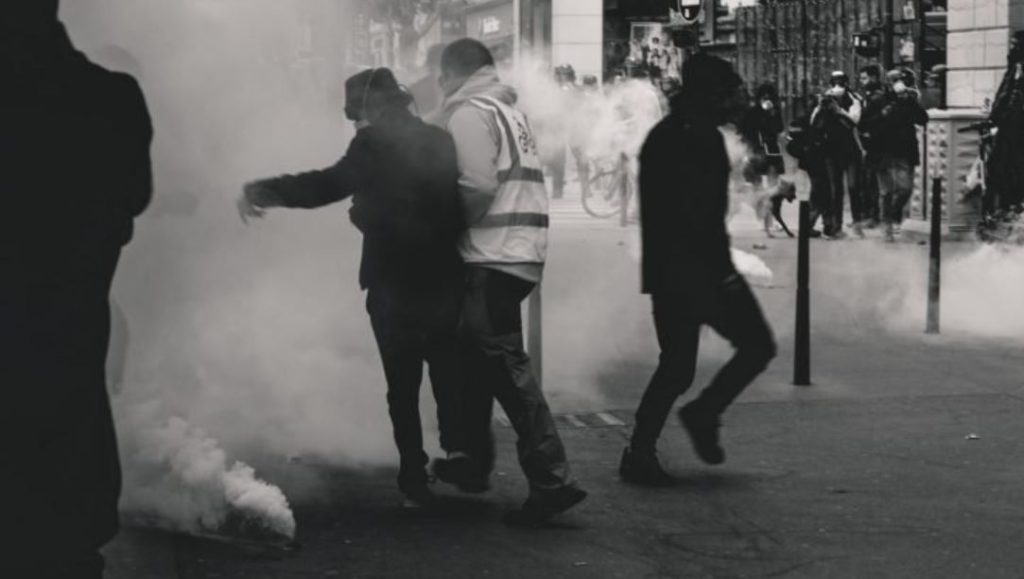 By John Vibes
By John Vibes
Over the past 100 years, the use of tear gas has become ubiquitous among the police and military forces of authoritarian regimes all over the world. This chemical agent is commonly used, and is often called a “less-lethal weapon” by authorities and their supportive media, which causes many people to forget that this is a chemical weapon that is banned in warfare by the Geneva Convention. Sadly, people all around the world have become desensitized to this chemical weapon being used in the streets of their neighborhood.
Jamil Dakwar, director of the human rights program with the American Civil Liberties Union, says that tear gas was initially developed during the first World War for use on the battlefield, and while the chemicals have since been refined for use against protesters, they can still be extremely dangerous and sometimes even fatal. He also pointed out that the risk of hurting or injuring innocent people is extremely high with a weapon like this.
“In general, it could be lethal. In fact, there are incidents where people were killed by these canisters. The problem with tear gas is that it’s also an indiscriminate weapon. If you think about the way that it’s being deployed, it doesn’t really distinguish between young people and elderly, the healthy and the sick, people who are peaceful protesters or those who are using violence. But the idea is that this has become the first trigger — the first thing that law enforcement would use — as if it is going to be the way to de-escalate and end the protest. Most of the time, it’s really used to suppress protest and that’s really one of the fundamental problems with it,” Dakwar told PRI.
Despite chemical weapons being banned in international conflicts, individual governments insisted on the power to use the gas against its own citizens, because they claimed that it was their only option to suppress demonstrations without using lethal force. However, this excuse entirely ignores that allowing the protesters to demonstrate, or succumbing to their demands could be a potential option.
The use of these chemical agents on protesters sends a clear message that their voice is not welcome and that their demands will not be taken seriously by authorities. In many cases, the use of tear gas causes further blowback from protesters, and does little to de-escalate conflicts between protesters and police. This was seen during the past week’s protests in Minneapolis, where demonstrations were largely peaceful until the streets were filled with tear gas.
When used in enclosed spaces, tear gas can also become combustible, and in many circumstances, including the high profile Waco siege, deadly fires have been blamed on the use of tear gas. Furthermore, the long-term physical effects of these chemicals are not very well-known, especially when it comes to children, the elderly, and people with underlying health conditions.
According to one study using data collected from protests in Bahrain, women who were exposed to tear gas were more likely to have miscarriages. In those same protests, a man with asthma was killed from inhaling the chemicals.
Source: The Mind Unleashed
John Vibes is an author, researcher and investigative journalist who takes a special interest in the counter culture and the drug war.
Subscribe to Activist Post for truth, peace, and freedom news. Become an Activist Post Patron for as little as $1 per month at Patreon. Follow us on SoMee, HIVE, Flote, Minds, and Twitter.
Provide, Protect and Profit from what’s coming! Get a free issue of Counter Markets today.

Be the first to comment on "Why Can Cops Use Chemicals Weapons That Are Banned In Warfare During Protests?"